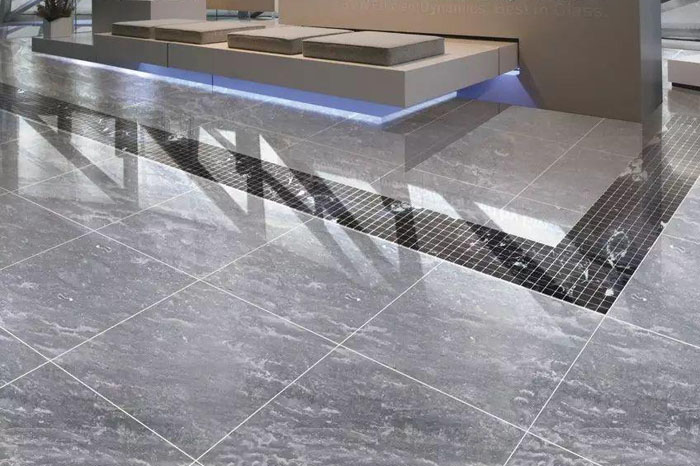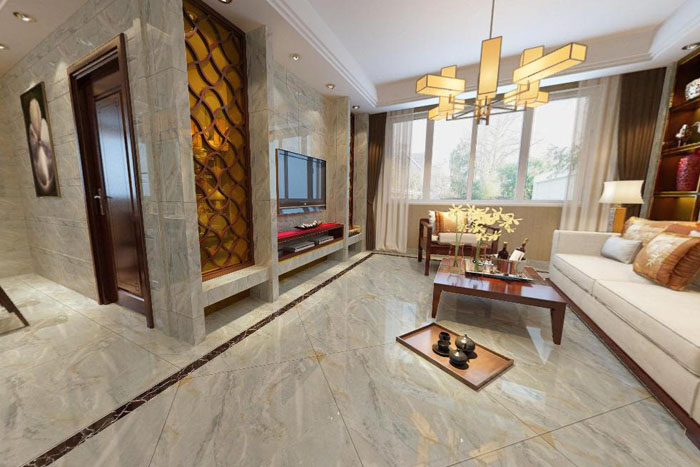Marble is mainly used to be processed into various shapes and plates, used as the wall, floor, platform, and column of buildings, and it is also commonly used as materials for monumental buildings such as monuments, towers, and statues. Marble can also be carved into practical works of art, such as arts and crafts, stationery, lamps, and utensils. So, what are the characteristics of marble stone resources? Below, let's take a look with the editor of FABULOUS Group.

good quality, best-selling market
The majority of Chinese marble varieties are of good quality, with fine texture, elegant tones, beautiful patterns, gloss, decorative performance, and use performance can meet the requirements of relevant standards. Many varieties are welcomed by users in domestic and foreign markets and have a certain reputation. For example, the white series include “White Jade” from Fangshan in Beijing, Quyang, Hebei, “Shu Baiyu” from Baoxing, Sichuan, “Cangshan White” from Dali, Yunnan, “Yuanyang Crystal White” from Yuanyang, Yunnan, and “Snow White” from Laizhou, Shandong. The black series include "Crystal Moyu" from Bijie, Guizhou, and "Shuangfeng Black" from Hunan Shuangfeng; the red series include "Red Wanluo" from Lingbi, Anhui, "Nanjiang Red" from Nanjiang, Sichuan, and Liaoning. "Tieling Red" from Tieling, "Laishui Red" from Hebei Laishui, etc.; the gray series include "Hanghui" from Hangzhou, Zhejiang, "Cloud Grey" from Dali, Yunnan, and "Bar Grey" from Laizhou, Shandong; green series There are "Dandong Green" in Dandong, Liaoning, "Laiyang Green" in Laiyang, Shandong, and "Lushan Green" in Lushan, Henan; the yellow series include "Rosin Yellow" and "beige" in Xichuan, Henan, and "Wood Grain" in Quanzhou in Guangxi. "Yellow" and so on; flesh-colored "red cream" and "white cream" from Yixing, Jiangsu, and "stripe cream" from Guiyang, Guizhou. Varieties known for their beautiful patterns include "Ningxiang", "Guibi" and "Jinhuang" from Huangshi, Hubei, "Aiyeqing" from Fangshan, Beijing, "Yunhua" from Dali, Yunnan, and "Tenglongyu" from Tongguan, Shaanxi. Shanxi Wenxi’s "Sea Waves", "Autumn Scenery" and so on.
has a full range of colors and varieties, and has formed a series
There are more than 400 main varieties of marble discovered in China. Even countries with developed marble industries such as Italy cannot compare in this respect. After the foreign trade number, there are more than 100 kinds of marble that can be exported in batches.
Various colors and patterns of marble have formed a series, white, black, red, gray, green, yellow, flesh color, all colors. The patterns are cloud-like, landscape-like, thread, willow-leaf, star-spotted, and rare paleontological fossil patterns, etc.

Some high-quality marble deposits are located in remote mountainous areas, and there are still great difficulties in development at present
There are many high-quality marble deposits in southwestern China. However, due to the remote mountainous area, dangerous high roads and poor mining conditions, especially the high transportation cost, it is difficult to develop on a large scale in the short term. Such as "Xuelicui" in Fugong, Yunnan, "Yuanyang Crystal White" and "Yuanyang Ice Flower" in Yuanyang, "Pingbian White" in Pingbian; "Shimian White" in Sichuan Shimian, "White White Jade" in Xiaojin, etc. .
The stone varieties in the proven reserves are mainly mid-range, while the high-end is less.
Famous products such as "Han Baiyu", "Dandong Green", and "Rosin Yellow" are very popular among customers. However, due to the small reserves and long-term mining, it has been difficult to mine in large quantities. In particular, the quantity and quality of white, pure black, and light-colored marble resources that are popular in the international market are still insufficient.